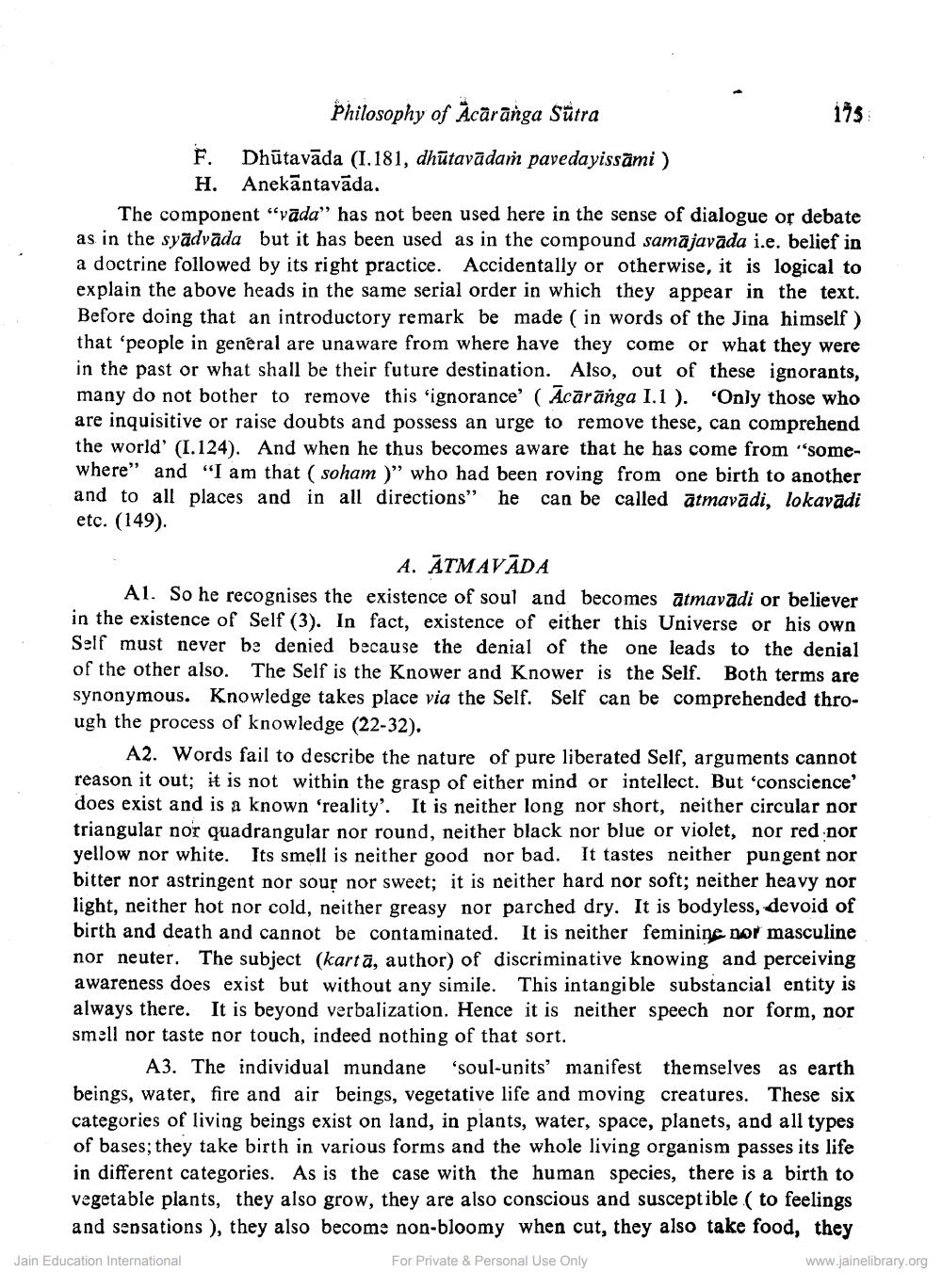Book Title: Philosophy of Acaranga Sutra Author(s): Joharimal Parikh Publisher: Z_Aspect_of_Jainology_Part_3_Pundit_Dalsukh_Malvaniya_012017.pdf View full book textPage 2
________________ Philosophy of Acârânga Sutra 173 F. Dhūtavāda (1.181, dhūtavādam pavedayissāmi ) H. Anekāntavāda. The component “vada" has not been used here in the sense of dialogue or debate as in the syadvada but it has been used as in the compound samājavada i.e. belief in a doctrine followed by its right practice. Accidentally or otherwise, it is logical to explain the above heads in the same serial order in which they appear in the text. Before doing that an introductory remark be made ( in words of the Jina himself) that 'people in general are unaware from where have they come or what they were in the past or what shall be their future destination. Also, out of these ignorants, many do not bother to remove this 'ignorance' ( Ācārāńga 1.1 ). Only those who are inquisitive or raise doubts and possess an urge to remove these, can comprehend the world' (1.124). And when he thus becomes aware that he has come from "somewhere" and "I am that ( soham)" who had been roving from one birth to another and to all places and in all directions” he can be called ātmavādi, lokavādi etc. (149). A. ÅTMAVĀDA A1. So he recognises the existence of soul and becomes atmavadi or believer in the existence of Self (3). In fact, existence of either this Universe or his own Self must never be denied because the denial of the one leads to the denial of the other also. The Self is the Knower and Knower is the Self. Both terms are synonymous. Knowledge takes place via the Self. Self can be comprehended through the process of knowledge (22-32). A2. Words fail to describe the nature of pure liberated Self, arguments cannot reason it out; it is not within the grasp of either mind or intellect. But 'conscience' does exist and is a known 'reality'. It is neither long nor short, neither circular nor triangular nor quadrangular nor round, neither black nor blue or violet, nor red nor yellow nor white. Its smell is neither good nor bad. It tastes neither pungent nor bitter nor astringent nor sour nor sweet; it is neither hard nor soft; neither heavy nor light, neither hot nor cold, neither greasy nor parched dry. It is bodyless, devoid of birth and death and cannot be contaminated. It is neither feminine nor masculine nor neuter. The subject (kartā, author) of discriminative knowing and perceiving awareness does exist but without any simile. This intangible substancial entity is always there. It is beyond verbalization. Hence it is neither speech nor form, nor smell nor taste nor touch, indeed nothing of that sort. A3. The individual mundane 'soul-units' manifest themselves as earth beings, water, fire and air beings, vegetative life and moving creatures. These six categories of living beings exist on land, in plants, water, space, planets, and all types of bases; they take birth in various forms and the whole living organism passes its life in different categories. As is the case with the human species, there is a birth to vegetable plants, they also grow, they are also conscious and susceptible ( to feelings ns), they also become non-bloomy when cut, they also take food, they Jain Education International For Private & Personal Use Only www.jainelibrary.orgPage Navigation
1 2 3 4 5 6 7 8 9 10 11 12 13
